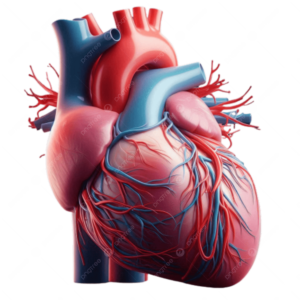


Overview of Cardiology
Cardiology is a specialized branch of internal medicine that focuses on the study, diagnosis, and treatment of diseases affecting the heart and blood vessels. It encompasses a wide range of cardiovascular disorders, including congenital heart diseases, coronary artery disease, heart failure, valvular heart diseases, arrhythmias, and hypertension. Cardiologists employ various diagnostic tools and therapeutic interventions to manage these conditions, ensuring optimal cardiovascular health for patients.

Anatomy and Physiology of the Cardiovascular System
The cardiovascular system comprises the heart, blood vessels, and blood, functioning collectively to transport oxygen, nutrients, hormones, and waste products throughout the body. The heart, a muscular organ divided into four chambers (right atrium, right ventricle, left atrium, and left ventricle), pumps blood systematically through two circulatory pathways:
- Pulmonary circulation: Deoxygenated blood is transported from the heart to the lungs for oxygenation and returned to the left atrium.
- Systemic circulation: Oxygen-rich blood is distributed from the left ventricle to tissues and organs via the aorta and returned to the right atrium.
Heart function is regulated by electrical impulses originating from the sinoatrial (SA) node, which coordinates rhythmic contractions to ensure efficient blood flow.

Common Cardiovascular Diseases
1. Coronary Artery Disease (CAD) : CAD occurs due to the accumulation of atherosclerotic plaques within coronary arteries, leading to reduced myocardial blood supply. Symptoms include angina pectoris, shortness of breath, and, in severe cases, myocardial infarction (heart attack). Treatment options include lifestyle modifications, pharmacotherapy (statins, beta-blockers, antiplatelet agents), and interventional procedures such as percutaneous coronary intervention (PCI) and coronary artery bypass grafting (CABG).
2. Heart Failure: Heart failure results from the heart's inability to pump blood effectively, leading to systemic congestion and inadequate perfusion of organs. It is classified into:
- Systolic heart failure (HFrEF) : Reduced ejection fraction due to weakened myocardial contraction.
- Diastolic heart failure (HFpEF) : Preserved ejection fraction but impaired ventricular relaxation
Management involves diuretics, ACE inhibitors, beta-blockers, and, in advanced cases, implantable devices such as pacemakers or left ventricular assist devices (LVADs).
3. Arrhythmias: Arrhythmias are abnormalities in the heart's electrical activity, resulting in tachycardia (rapid heartbeat) or bradycardia (slow heartbeat). Common arrhythmias include:
- Atrial fibrillation (AF): Irregular atrial contractions increasing stroke risk
- Ventricular tachycardia (VT): Rapid ventricular contractions, potentially life-threatening
- Heart block: Impaired conduction requiring pacemaker implantation.
Electrophysiological studies (EPS), antiarrhythmic medications, catheter ablation, and implantable cardioverter defibrillators (ICDs) are utilized for arrhythmia management.
4. Valvular Heart Diseases : Structural abnormalities in heart valves (stenosis, regurgitation) disrupt normal blood flow dynamics. Conditions such as aortic stenosis and mitral regurgitation are diagnosed using echocardiography and treated via valve repair, percutaneous interventions (TAVR), or surgical replacement.
5. Hypertension (High Blood Pressure): Chronic hypertension increases cardiovascular risk by predisposing individuals to stroke, heart failure, and renal disease. Blood pressure control through antihypertensive agents (ACE inhibitors, calcium channel blockers, diuretics) and lifestyle modifications is crucial in preventing complications.

Diagnostic Techniques in Cardiology
Cardiologists utilize several diagnostic modalities to evaluate cardiovascular health:
- Electrocardiogram (ECG/EKG) : Measures electrical activity of the heart to detect arrhythmias and ischemia.
- Echocardiography: Ultrasound imaging of cardiac structures to assess function and valve integrity.
- Stress Testing : Evaluates myocardial response to exertion, identifying ischemic changes.
- Cardiac Catheterization: Invasive procedure to assess coronary artery blockages and perform interventions.
- Cardiac MRI/CT : Advanced imaging modalities for detailed structural assessment

Preventive Cardiology and Lifestyle Modifications
Prevention plays a pivotal role in reducing cardiovascular morbidity and mortality. Key recommendations include:
1- Dietary Adjustments : Adopting a heart-healthy diet rich in fruits, vegetables, whole grains, and lean proteins while minimizing saturated fats, sodium, and added sugars.
2- Physical Activity: Engaging in regular aerobic exercise (150 minutes per week) to enhance cardiovascular fitness.
3- Smoking Cessation: Eliminating tobacco use to reduce the risk of atherosclerosis and myocardial infarction
4- Blood Pressure and Cholesterol Management : Routine screening and medical therapy for hypertension and dyslipidemia.
5- Diabetes Control: Optimizing blood glucose levels through dietary regulation, physical activity, and medication when necessary.

Advances in Cardiology
The field of cardiology continues to evolve with technological innovations, including:
- Gene Therapy: Investigating genetic modifications to treat inherited cardiac disorders.
- Artificial Intelligence (AI) in Cardiology : AI-driven algorithms for early detection and risk stratification.
Wearable Cardiac Monitors : Smart devices facilitating real-time heart rhythm tracking
Regenerative Medicine : Stem cell therapy exploring myocardial tissue regeneration
Conclusion
Cardiology remains a cornerstone of modern medicine, addressing one of the leading causes of morbidity and mortality worldwide. Advances in diagnostic techniques, pharmacological interventions, and surgical innovations have significantly improved patient outcomes. Continuous research and patient education on cardiovascular health are essential in promoting longevity and well-being

Coronary Artery Bypass Grafting (CABG)
1. Heart Failure :
Heart failure is a progressive condition where the heart's ability to pump blood is compromised, leading to systemic congestion and reduced tissue perfusion. It can result from ischemic heart disease, hypertension, valvular disorders, or cardiomyopathies. Treatment strategies involve optimizing preload and afterload with diuretics, angiotensin-converting enzyme inhibitors (ACEIs), beta-blockers, and device-based therapies such as implantable cardioverter-defibrillators (ICDs) and cardiac resynchronization therapy (CRT).
2. Arrhythmias : Cardiac arrhythmias refer to abnormal electrical activity in the heart, manifesting as tachycardia (fast heart rate), bradycardia (slow heart rate), or irregular rhythms (e.g., atrial fibrillation). Management includes antiarrhythmic medications, catheter ablation, and pacemaker implantation.
4. Valvular Heart Disease : Disorders of the heart valves (aortic, mitral, tricuspid, and pulmonary) can lead to stenosis or regurgitation, impairing hemodynamics and cardiac function. Diagnosis is made via echocardiography, and treatment may involve valve repair, transcatheter interventions, or surgical replacement.
5. Hypertension : Hypertension is a major risk factor for cardiovascular disease, increasing the likelihood of stroke, myocardial infarction, and chronic kidney disease. Management involves antihypertensive medications, dietary sodium restriction, weight control, and regular physical activity.

Diagnostic Modalities in (Cardiology)
Pharmacological Therapy : Includes antiplatelets, anticoagulants, beta-blockers, ACE inhibitors, calcium channel blockers, diuretics, and statins.
Interventional Cardiology : Techniques such as balloon angioplasty, coronary stenting, and percutaneous valve replacement.
Cardiac Surgery : Includes coronary artery bypass grafting (CABG), valve repair/replacement, and heart transplantation.
Lifestyle Modifications : Smoking cessation, healthy diet, regular exercise, and stress management are crucial for cardiovascular health.

Preventive Cardiology and Risk Factor Management
Primary prevention aims to reduce risk factors such as smoking, obesity, hyperlipidemia, diabetes, and hypertension through public health initiatives. Secondary prevention focuses on preventing recurrent cardiovascular events in patients with existing conditions.
Conclusion
Cardiology continues to evolve with advances in technology, precision medicine, and innovative therapeutic strategies. Early detection, accurate diagnosis, and timely interventions play a crucial role in improving patient outcomes and reducing the global burden of cardiovascular diseases.
